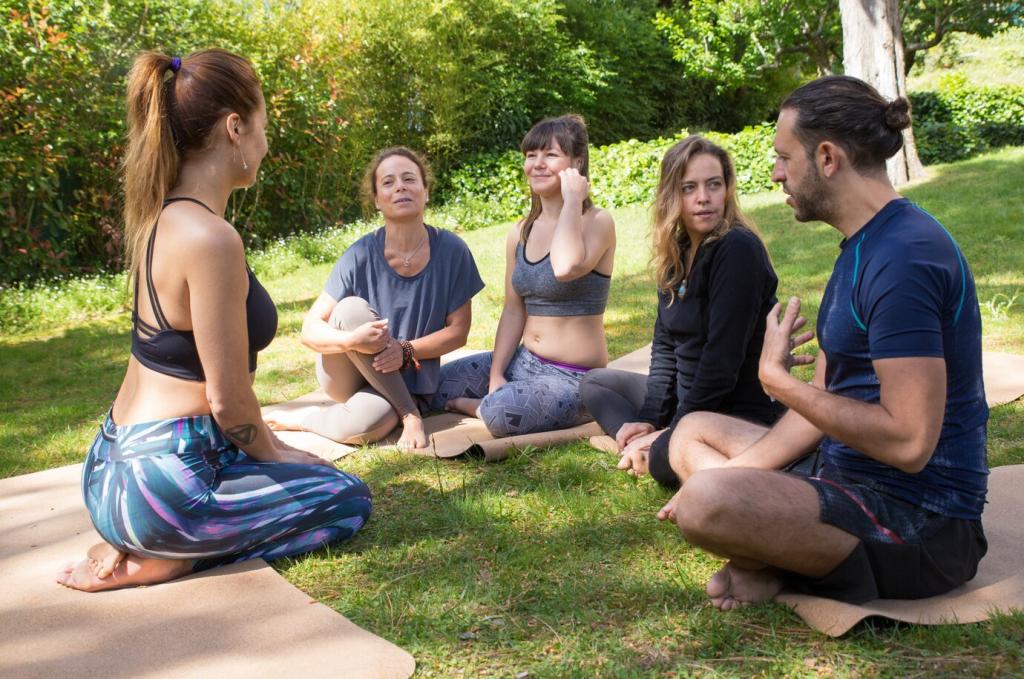
The Science Behind Mindfulness Meditation
Today’s theme: The Science Behind Mindfulness Meditation. Step into an evidence-informed field where brain imaging, physiology, and lived experience meet. We’ll translate complex research into friendly, practical insights—and invite you to share, subscribe, and explore your own mindful experiments alongside us.

How Mindfulness Shapes the Brain
Studies suggest mindfulness training can dial down amygdala reactivity while strengthening prefrontal networks involved in impulse control and perspective taking. Many practitioners report fewer snap reactions in daily stress, and we invite you to reflect: where did you notice a pause replacing an old habit?
Cortisol, Inflammation, and Calm
Randomized studies have reported modest reductions in cortisol and inflammatory markers after mindfulness programs, though effects depend on dose and context. Consider a two-week journal: track sleep quality, perceived stress, and energy. Share your observations to inspire others navigating similar pressures.
Vagus Nerve, Breath, and Heart Rate Variability
Slow, steady breathing can stimulate vagal pathways and enhance heart rate variability, a sign of stress resilience. Try four seconds in, six out, for five minutes. Notice warmth or settling sensations. If it helps, subscribe for guided audio you can play during a lunch break.

Attention, Learning, and Everyday Productivity
Mindfulness practice engages regions like the anterior cingulate cortex, supporting conflict monitoring and error detection. In real life, that means catching distractions sooner. Try a 90-second micro-meditation before a tough task and comment whether your first five minutes felt less scattered.
Attention, Learning, and Everyday Productivity
Brief mindfulness training has been linked with small but meaningful boosts in working memory under demanding conditions. Translate this by pausing between emails: three breaths, one intention. If your mental backlog feels lighter afterward, share your strategy so others can experiment too.


Emotions, Compassion, and Resilient Relationships
Mindfulness trains decentering—the ability to notice thoughts as events, not instructions. This shift reduces overidentification and supports healthier choices. Try labeling thoughts as “planning,” “worry,” or “memory,” then tell us whether naming softened their grip during a tough moment.
Emotions, Compassion, and Resilient Relationships
Loving-kindness and compassion practices can recruit networks associated with empathy and caregiving, while also building emotional balance. Start with silent phrases like “May I meet this with care.” Share a moment when kindness toward yourself changed how you treated someone else.
Evidence, Nuance, and Safe Practice
01
What Trials Do—and Don’t—Show
Randomized trials often find small-to-moderate benefits for stress, anxiety, and mood, with variability across programs and people. This is encouraging, not magical. If you appreciate honest nuance, subscribe for our monthly evidence summaries with links you can explore directly.
02
Placebo, Dose, and Individual Differences
Expectations, instructor skill, and practice frequency all matter. Some thrive with ten minutes daily; others need longer or different modalities. Share what schedule feels realistic for you, and we’ll tailor future guides to common patterns in our community.
03
Safety First: When to Seek Guidance
If strong emotions or trauma memories surface, pause and seek support from a qualified professional. Mindfulness should feel grounding, not overwhelming. Comment anonymously if you prefer, and we’ll compile resources and helplines in our next newsletter.
Start Here: A Science-Grounded Practice Plan
Sit comfortably, lengthen your spine, and notice five breaths. Feel the inhale rise and the exhale fall. When thoughts pull, label “thinking,” and return. Afterward, rate calm and focus from one to ten, then share your scores this week so we can learn together.

